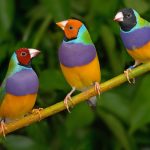These Rose-Faced Birds Are Sure To Make You Fall In Love With Their Beautiful Pastel Hues

The rosy-faced lovebird (Agapornis roseicollis), sometimes known as the rosy-collared or peach-faced lovebird, are easily the most popular species of lovebirds found not only in the United States, but all over the world. Because they breed like bunnies, a lot of color mutations have spawned, including but not limited to Creminos, Lutinos, Pieds, Orange-faced, Fallows, Whitefaced, Cinammons, and Violets.
They are the epitome of true love, hence their name. Lovebirds mate for life, and can get depressed when they are separated from their partner.
They are monogamous in nature and reach sexual maturity at ten months of age. Their mating begins with courtship, and this can continue throughout their lifespan, which is approximately 12 to 15 years.
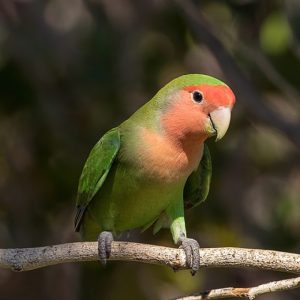
Rosy-faced lovebirds originally have beautiful green bodies, with a blue rump, horn-colored bill, and grey feet.
With their growing population, they branched out into more different color combinations ranging from white, teal, black, lavender, and yellow.
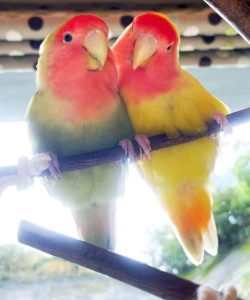
Their personalities and intelligence can be likened to those of parrots, as well as their appearance.
However, they are significantly smaller and less noisy than their larger counterparts. They are native to the forests of Africa, but are now easily found all over the world, may it be in the wild or someone else’s backyard.
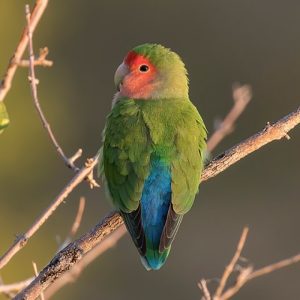
They are androgynous, and male and female ones are usually hard to be distinguished from one another. Needless to say, they are both excellent breeders and parents at that.
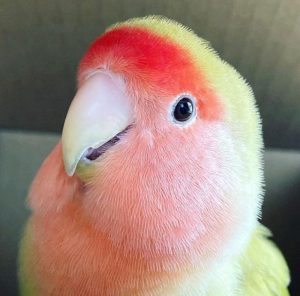
Most lovebird species grow up to 10-14 cm, and these rosy-faced species are actually the larger ones out of them as they can potentially reach 15 cm in size.
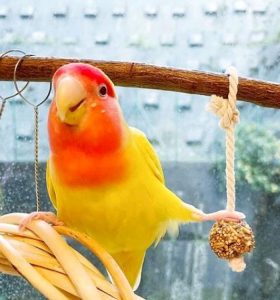
In the wild, they prefer to live up to 1,600 meters above the sea level and they are usually found in forests, semi-deserts, and the high mountains. Their habitats depend on their access to water.
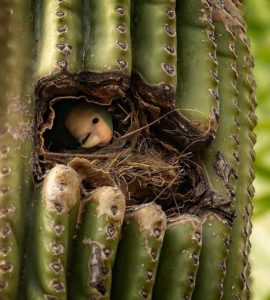
They usually just eat seeds and berries, and they may gather in flocks when there is an abundant presence of food. With that said, they can also be pests in agricultural lands as they like to feed on crops such as millet.
When breeding, the females are usually the ones in charge of building the nest, where it lays about three to six eggs and incubates it for about twenty-three days. She will then take care of the hatchlings until they reach six weeks of age, and the father takes it from there until they are ready to fly.


